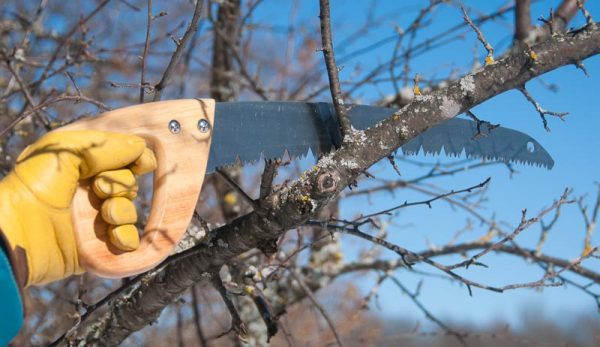
Anyone who knows me well (or has read my columns here) knows that I thoroughly enjoy pruning trees. It’s one of my favorite farming tasks—nothing can change a landscape more quickly than trimming the messy lower branches of a spruce tree, and I spend a good portion of the year going around the farm and working to keep encroaching trees and branches under control.
There are also plenty of apple trees to care for, and of course they require occasional pruning as well, albeit with a focus on fruit production more than aesthetics. With this in mind, I was recently given a new pruning saw as a gift, and suffice to say I’m excited to start using it now that spring is just around the corner.
You might wonder what makes a pruning saw different from any other saw. Pruning saws come in a few different shapes and sizes, with some of them attached to long poles and aimed at pruning out-of-reach branches high above your head. My new pruning saw is simpler—at first glance, it’s not much different than a regular hand saw—but a closer examination quickly reveals a few key differences that make it more ideal for tricky pruning work.
First let’s consider shape. Rather than having a straight blade, my new pruning saw features a curved blade, and from what I understand this is often the preferred shape for pruning work. Having never used a curved blade before, I’m looking forward to comparing and contrasting the strengths and weaknesses of the two designs.
Second is the number and size of the teeth. My pruning saw has fewer teeth (just 64) than some of my other saws, but its teeth are also larger and sharper—perfect for handling larger branches.
Perhaps the most significant difference is the height of the blade: The blade of my pruning is not as tall as those of my other saws. The pruning saw’s blade is just 2 1/4 inches tall at the point where it attaches to the handle, diminishing to less than 1 1/2 inches at the tip of the blade. This subtle fact means that the pruning saw can be maneuvered into tight quarters where lots of branches crisscross in close proximity. When I’ve used regular saws in such conditions, I’ve often found it difficult to get the taller blades into these narrow spaces.
Plus, as a nice bonus, my pruning saw features an attractive wooden handle that feels solid and durable—no plastic here!
As if I weren’t already eager for spring to arrive, having this pruning saw waiting for action will make the wait even harder. Come on, sunshine! Let’s get this snow melted already!




